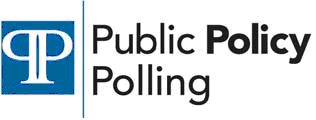This is part of PPP's new report on why moderates win in North Carolina. You can read the whole thing here.
_____________________________________
Several candidates running for statewide offices in the Democratic primary last spring, including Senate candidate Jim Neal and Lieutenant Governor candidates Dan Besse and Hampton Dellinger, ran campaigns that seemed to be strongly targeted at liberal voters in the party. All were unsuccessful. That can be traced back to a myriad of reasons, but one is quite simple: there just aren’t enough voters who identify themselves as liberals to win with them as your base, even within the Democratic Party.
Self Identified Ideology of North Carolina Democrats:
Liberal 35%
Moderate 46%
Conservative 19%
Starting out with a strong moderate base, with an ability to also appeal to either the liberal or conservative wing of the party is the path to victory in a Democratic primary, and obviously a well worn one through the years.
It is not impossible for a well funded liberal candidate to win in the primary, but the chances are particularly small if multiple liberals run. There needs to be unity around a single candidate for the more left leaning segment of the party to get someone nominated.
A common misconception in reaching out to black voters in a Democratic primary may be that they are all liberals. Our analysis found that is not the case.
Self Identified Ideology of Black North Carolina Democrats:
Liberal 27%
Moderate 53%
Conservative 20%
Black Democrats are actually less likely than Democrats in general to think of themselves as liberals, and more likely to think of themselves as moderates. There was a school of thought last spring that with the contested Presidential primary coming to North Carolina increased turnout from black voters would make it more likely for liberal candidates to win in the other statewide primaries, but this data indicates that appealing to black voters as liberals may not be the best path to earning their votes.
There is good news for liberal Democrats. Among folks within the party over 45 just 29% identify as liberals, but with voters under 45 that number increases to 43%. And a majority of Democrats under the age of 30 describe themselves as liberals. There could be a leftward move as the party shifts generations.

No comments:
Post a Comment